
cd_nom
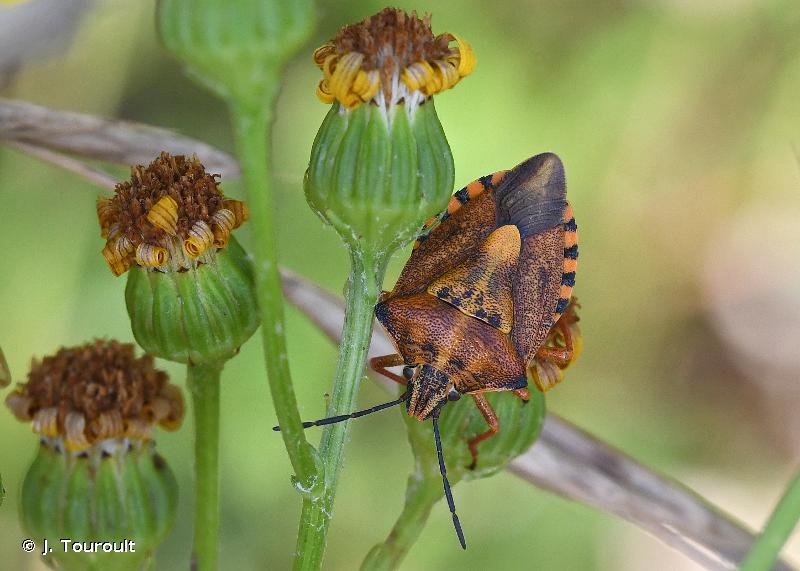
| Author : J. Touroult |
 |
To get the picture, please visit:
Julien Touroult
PatriNat (OFB - CNRS - MNHN)
CP41, 36 rue Geoffroy Saint-Hilaire, 75005 Paris
Legend: Deux-Sèvres
Despite the Creative Commons license, please inform the author of the use which will be made of his photo
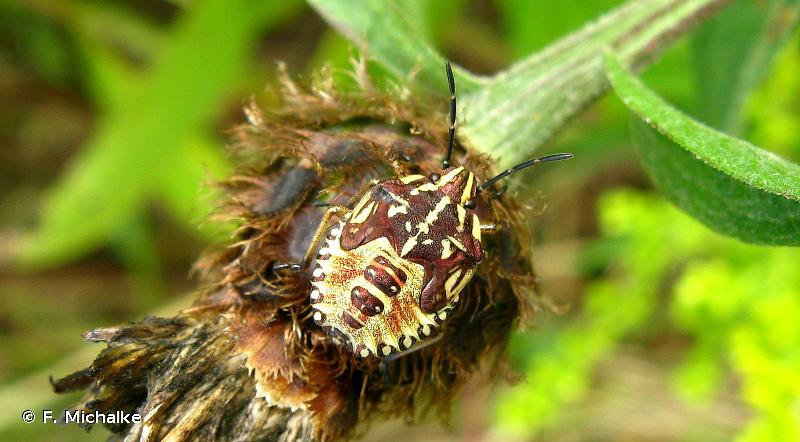
| Author : F. Michalke |
 |
To get the picture, please visit:
Friedrich Michalke
email : inpn@mnhn.fr
Despite the Creative Commons license, please inform the author of the use which will be made of his photo
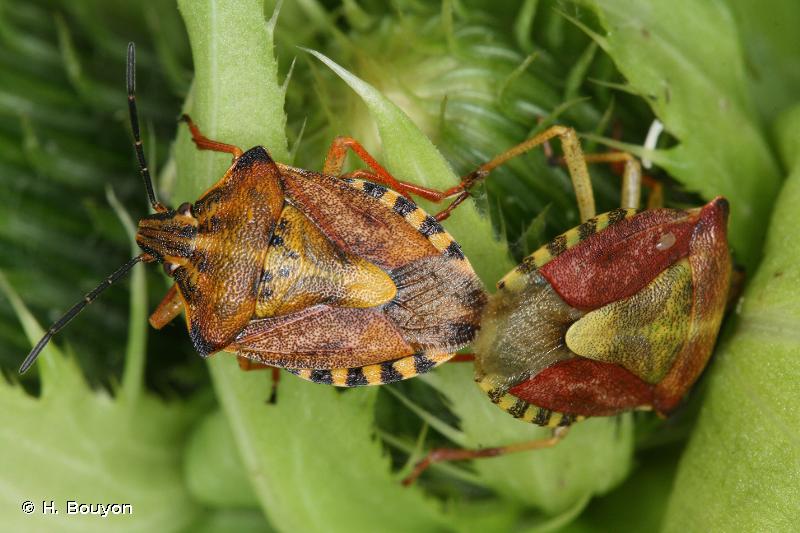
| Author : H. Bouyon |
 |
To get the picture, please visit:
Hervé BOUYON
email : herve.bouyon@wanadoo.fr
Any reuse of one or more photographs on this site is subject to an authorization request from the author.
Link to the Code of Intellectual Property (Legifrance)
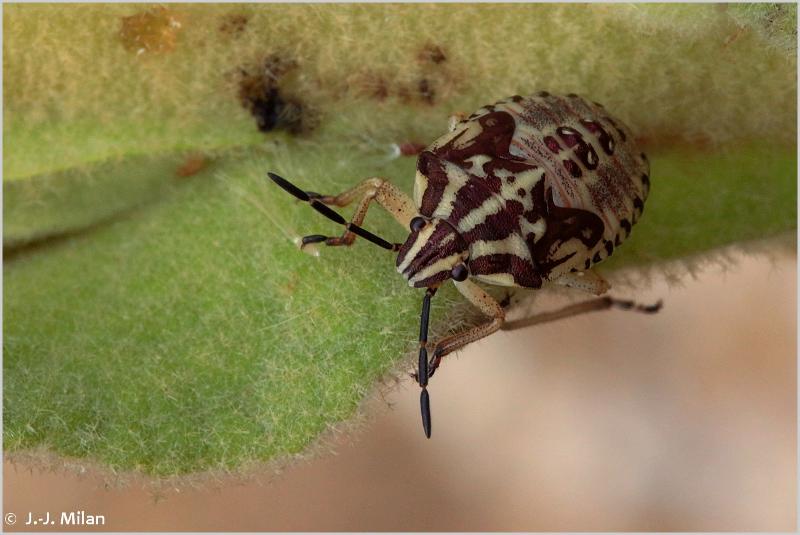
 |
To get the picture, please visit:
Jean-Jacques Milan
http://jjmphoto.fr/#Galeries.B
Société linnéenne de Bordeaux
email : jean.jacques.milan@wanadoo.fr
Despite the Creative Commons license, please inform the author of the use which will be made of his photo
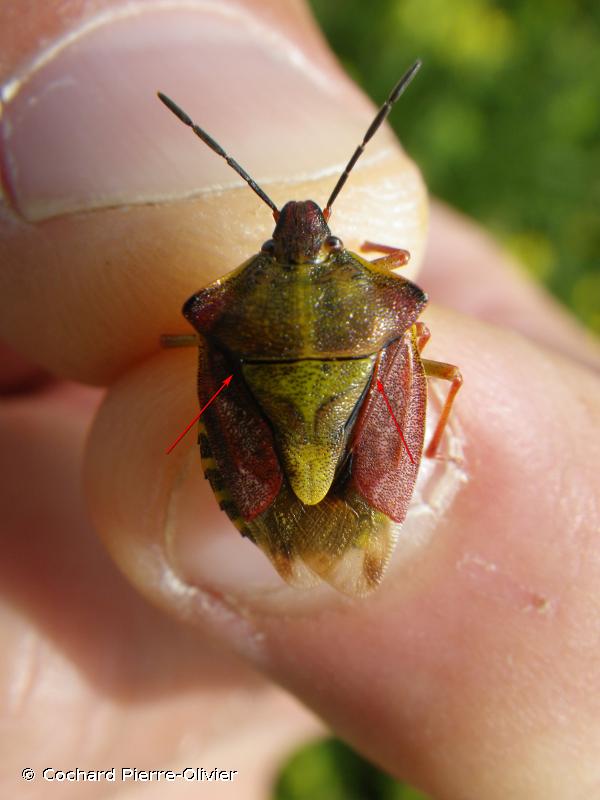
| Author : Cochard Pierre-Olivier |
 |
Despite the Creative Commons license, please inform the author of the use which will be made of his photo
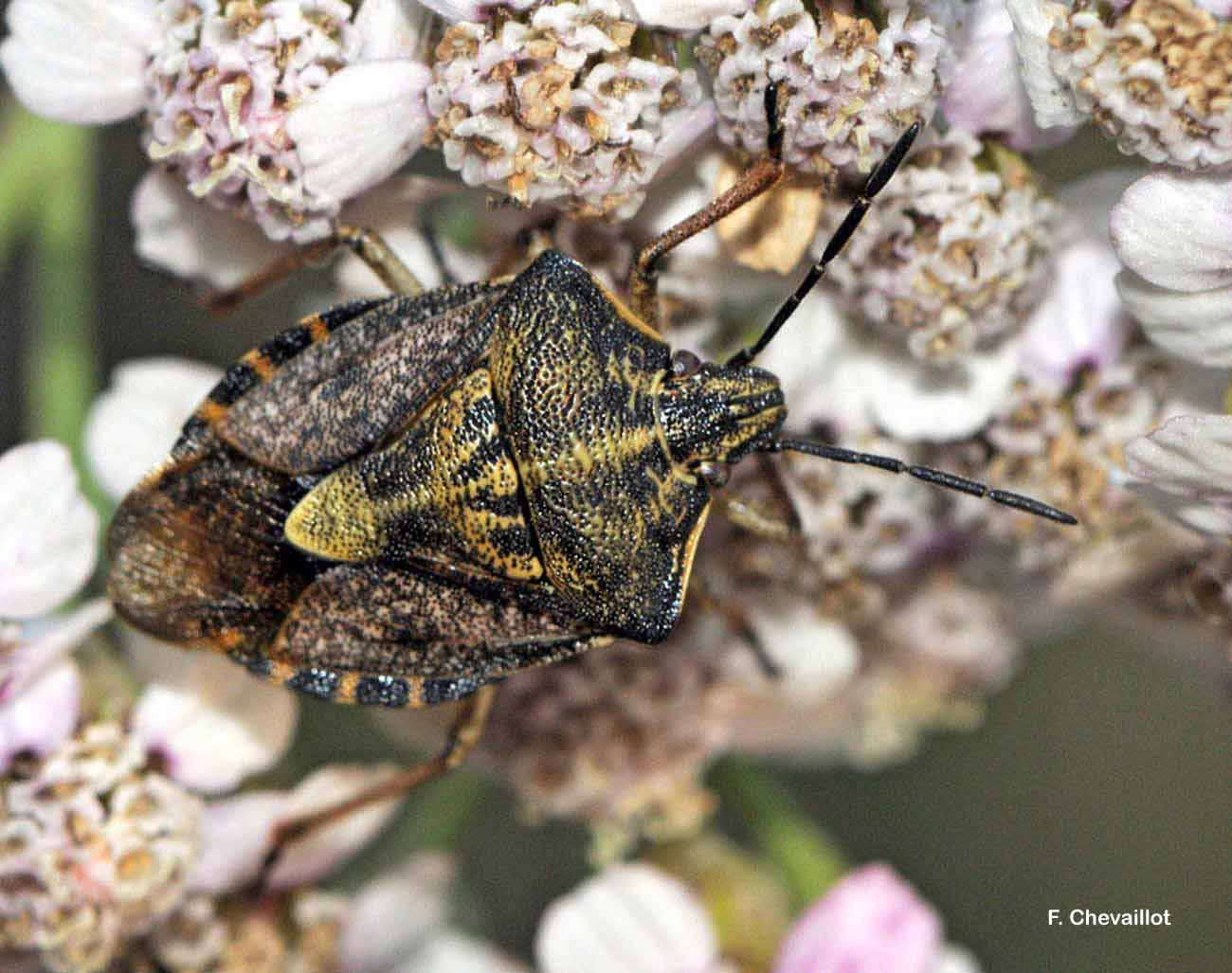
| Author : F. Chevaillot |
 |
To get the picture, please visit:
Fred CHEVAILLOT
Moulin de Castor
La Maynobe
12550 COUPIAC
06 51 19 18 32
09 88 28 31 26
www.insecte.org
email : fred.chevaillot@wanadoo.fr
Any reuse of one or more photographs on this site is subject to an authorization request from the author.
Link to the Code of Intellectual Property (Legifrance)
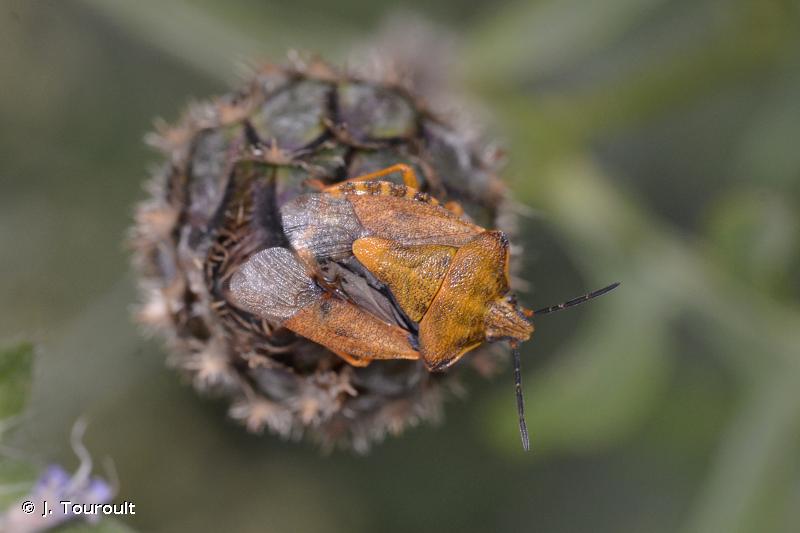
| Author : J. Touroult |
 |
To get the picture, please visit:
Julien Touroult
UMS PatriNat AFB - CNRS - MNHN
Muséum national d'Histoire naturelle, CP41, 36 rue Geoffroy Saint-Hilaire, 75005 Paris
Despite the Creative Commons license, please inform the author of the use which will be made of his photo
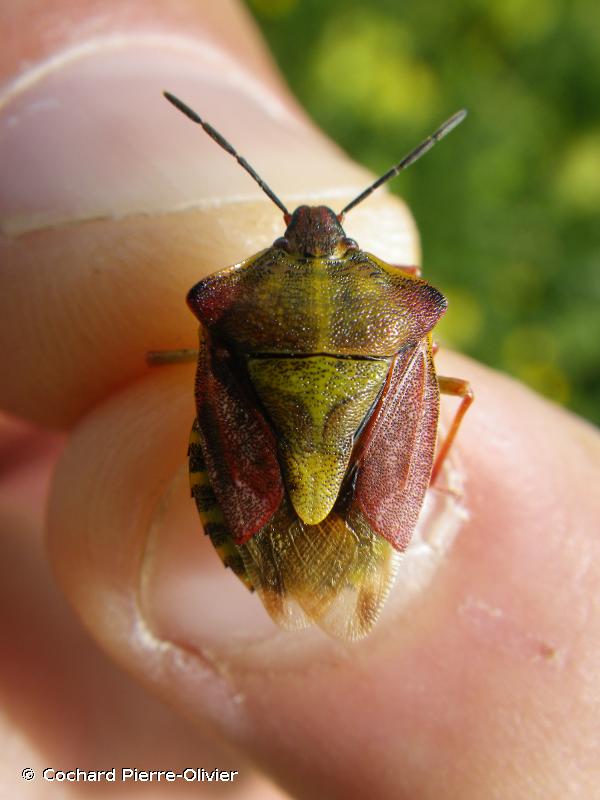
| Author : Cochard Pierre-Olivier |
 |
Any reuse of one or more photographs on this site is subject to an authorization request from the author.
Link to the Code of Intellectual Property (Legifrance)
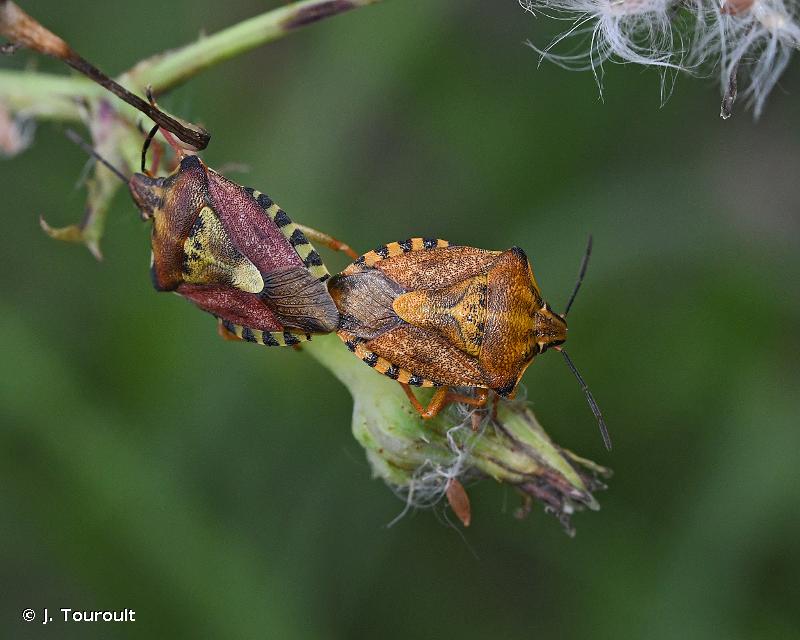
| Author : J. Touroult |
 |
To get the picture, please visit:
Julien Touroult
PatriNat (OFB - MNHN)
CP41, 36 rue Geoffroy Saint-Hilaire, 75005 Paris
Legend: Lot-et-Garonne
Despite the Creative Commons license, please inform the author of the use which will be made of his photo
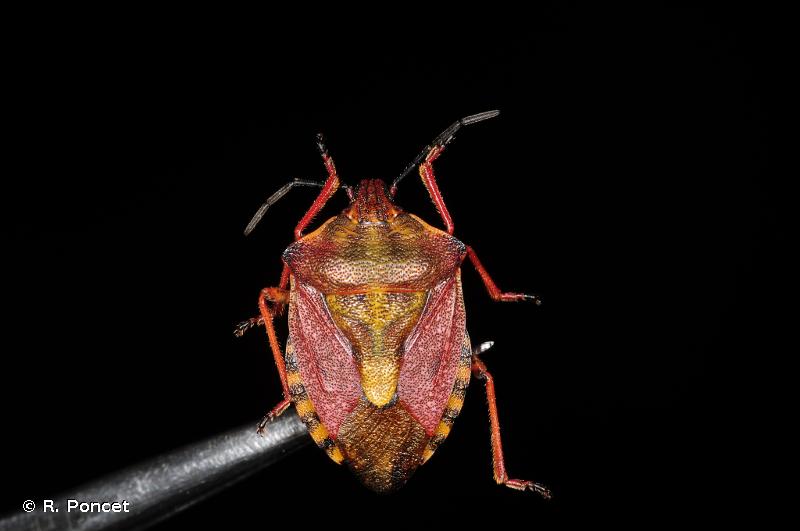
| Author : R. Poncet |
 |
To get the picture, please visit:
Rémy Poncet<br>Muséum national d'Histoire naturelle - PatriNat<br>36 rue Geoffroy Saint-Hilaire CP 41<br>75 231 PARIS CEDEX 05<br>e-mail : inpn@mnhn.fr
Despite the Creative Commons license, please inform the author of the use which will be made of his photo

| Author : R. Poncet |
 |
To get the picture, please visit:
Rémy Poncet<br>Muséum national d'Histoire naturelle - PatriNat<br>36 rue Geoffroy Saint-Hilaire CP 41<br>75 231 PARIS CEDEX 05<br>e-mail : inpn@mnhn.fr
Despite the Creative Commons license, please inform the author of the use which will be made of his photo
Taille : 10 – 13,5 mm
Diagnose :
Punaise dont la couleur varie du jaunâtre, au brunâtre, au rougeâtre et à l'orangé. Les angles huméraux de son pronotum sont légèrement aigus et marqués chacun d'une tache noire étendue le long du bord antéro-latéral. Son abdomen est moins large que le pronotum. Ses articles antennaires III sont plus courts que les II et les articles II à V sont noirs. Les bords latéraux du scutellum sont droits et non marqués par une échancrure profonde au milieu.
Détermination : Moyennement difficile.
Espèces proches :
Cette espèce ressemble beaucoup à Carpocoris pudicus dont elle se distingue par la forme de ses angles huméraux du pronotum plus aigus, et les bords latéraux du scutellum dépourvus d'encoche profonde.
Période d'observation :
Fin avril à octobre, avec un pic important en juillet.
Biologie-éthologie :
Espèce polyphage qui se nourrit sur de nombreuses familles végétales, dont des Asteracées comme les cirses, des crucifères, des ombellifères et des graminées.
Biogéographie et écologie :
Espèce eurosibérienne répandue dans toute l'Eurasie non méditerranéenne, atteignant 60° de latitude nord en Scandinavie. Dans une grande variété d'habitats secs ou humides jusqu'à 1 900 m d'altitude, ensoleillés ou semi-ombragés, herbacés ou arborés : boisements clairs, prairies bocagères, landes, friches, rocailles, pelouses sur coteau, secteurs délaissés des bords de routes et des chemins, marais, zones humides, bords de rivières, cultures, jardins. En montagne, on la rencontre dans les éboulis, le bord des chemins, les prairies fleuries et les pinèdes claires. C'est une espèce commune mais devenant très rare et localisée en zone méditerranéenne, et complètement absente le long du littoral de cette dernière.
Roland Lupoli (),2020
Continental
Metropolitan France
Overseas
Marine
Metropolitan France
Overseas
The map presents a summary at the 10 x 10 km grid of the observation data for the species transmitted to the SINP. These data have been subjected to validation filters.
The map presents a reference distribution layer of the species at the scale of departments and marine sectors. The presence and absence data were established by expertise within a network of partners. This reference distribution is used in the validation process of the SINP data at the INPN level.
Corresponds to a report on the basis of at least one observation proved within a period of 10 years (20 years for little-known invertebrates) preceding the year and no presumption of extinction since obtaining the last data nor doubt on reproductive and implemented nature of this population. For migratory species, the presence indicated concerns areas of reproduction.
This status is based on one or more of the following criteria:
This point covers the absence, more difficult by nature to demonstrate than presence. This status is based on one or more of the following criteria:
This status must be assigned to a department in which the presence of the species is casual.
Particular case of absence due to a proven extinction less than a half century ago (older disappearances are treated as "no probable or definite").
In the state of knowledge, we can not comment on the presence or absence in the current department. This is the default status when not comprised in one of the previous categories or whenever there is doubt.
The map shows the global distribution of the species based on GBIF data (Global Biodiversity Information Facility).
